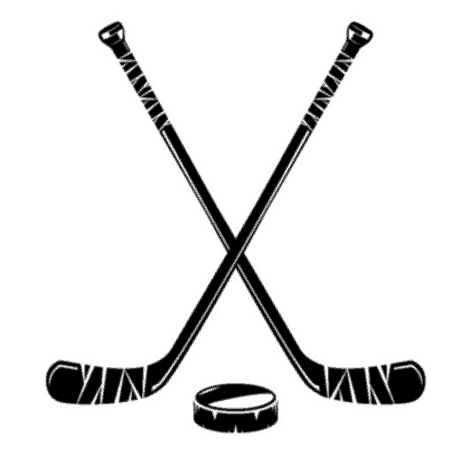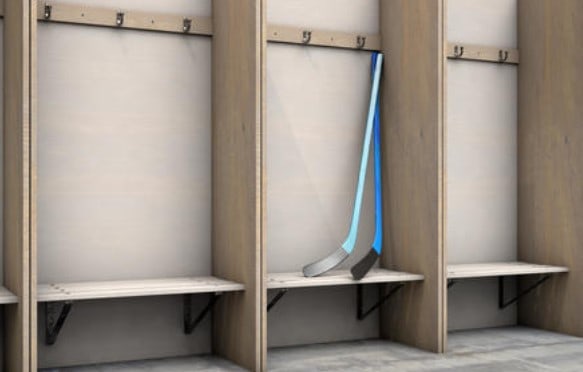When you watch a hockey game, you notice there are 20 minutes between each period. What do the players do between those periods?
Hockey players rest, refuel, and adjust their pads between periods. Because hockey is a heavy contact sport, hockey players’ gear is constantly being altered from its original form and position. Hockey players also take off their skates and cool down between periods.
What do Hockey Players Eat Between Periods?
Playing hockey burns many calories because of the high intensity over short periods of time plus the extra weight in gear players are carrying on the ice. Because the pads and jersey trap body heat close to the body, the player’s internal temperature will rise quickly as well. All these factors play into burning calories quickly and often.
Players eat light snacks between periods, not a heavy recovery meal like they do post-game. They will eat snacks like natural fruit, energy bars, or a small sandwich. There are many options here as the ‘quick energy bar’ market has exploded with many products. Be careful which products you choose, and stick close to natural sugar for some quick boosts.
Players also need to hydrate- no brainier here with the amount of sweat streaming off their bodies. You might think because the rink is cold, players will sweat a little less than other athletes playing outside, but just ask anyone who has played hockey before. It’s hot. Goalies can sweat off 5 pounds or more of water during a game. Hydration is not an option- that is why you see a water bottle on top of the goal. The goalie can grab it at any time and take a drink.
Players always get a little extra jolt when they score a “water bottle goal,” This is where the puck hits the bottle, sending water flying in the air. Here are a few goals with water bottle explosions.
Some helpful ways to stay hydrated are water, a sports drink with a little sugar or these Gatorade Chews that can be found on Amazon. Some people have gone so far as to create a business around hockey snacks. Check out this company in Canada, Hockey Snacks. They will even deliver them to your game!
Do NHL players Change Jerseys Between Periods?
Yes, some NHL players change jerseys between periods. As part of the cooling down process during intermission, players will take skates, jerseys, and pads off to try their best in dry out before having to put everything back on 3 – 4 minutes before the next period starts. Players will hang their jerseys up to dry in their locker. If there is a tear or defect in the jersey, the equipment manager will replace it with a new one. Since the jersey is not touching the skin directly, players are less concerned about it than other equipment.
Since hockey players wear around 20 pieces of equipment, every motion or hit from another player can jar their equipment loose. During the intermission, players are readjusting their equipment to the correct position. As you can imagine, the gear can get pretty uncomfortable if it slips into the wrong position while playing.
The goal for players going back on the ice for the next period is to be as comfortable as possible. At the NHL level, equipment managers will be running around during intermission like crazy trying to help the players out. Although teams carry industrial dryers with them, staff can be seen using a blow dryer for a quick fix during the break.
Do Hockey Players Sharpen Their Skates Between Periods?
The most particular pieces of equipment hockey players care about are their skates and sticks. There is a close tie for first on which piece receives more superstitious rituals. Most players do not get their skates sharpened every period. In the NHL, players will have freshly sharpened skates for every game, but not in between periods.
The closer you get to the best player in the league, the more demands you can make (and rightly so). Sydney Crosby, for example, gets his skates sharpened between every period. Pretty high maintenance if you ask me, but if it puts goals in the back of the net, you bend over backward for one of the most prolific goal scores of our time.
Players know their skates. Having thousands of hours on them over their life, they can feel every edge, every tiny thing that might be slightly off. Goalies are a whole other story, with helping them put on their own equipment, to helping them stretch, to keeping their water bottles full. All their equipment combined encroaches on 50 pounds. That is a ton of weight to wear for an entire game.
How Often do Players Retape Their Sticks?
The beloved hockey stick. If there is any piece of equipment that is shown more love in any sport, please let me know. Just ask any player how often they retape their stick, and they will tell you “not enough.”
Hockey players retape their hockey sticks during intermission. Rarely will a player going an entire period without something happening to their stick. They might not tear all the tape off and start over, but they will do a touch-up job. Every player has a unique way of taping their stick and is very particular about how it is done.
Most people think of the blade of the stick as the only spot with tape on it. The handle (or the very top few inches of the stick), also gets some love from the roll of tape.
Here is a video on how some of the pros tape their sticks.
Baseball players are known for their superstitious activities before and during a game, and hockey players follow quickly behind them with their sticks. There is such a style and identity with players and what their stick looks like.
Everyone in hockey knows there is such a stigma around stick tape jobs, they poked fun at it during an all-star game one year. The NHL went around and interviewed players asking them one simple question about tape jobs.
Who has the Worst Tape Job in the NHL?
How Long is the NHL Intermission?
When looking at the clock after an NHL period is over, it starts at 20 minutes and counts down. In reality, the NHL intermission is 17 minutes. The extra few minutes is for the ice to dry and time for everyone to get off and then back on the ice.
Depending on your league, you may have a little less time. Most breaks are between 15 and 20 minutes long. Most leagues will run the Zamboni to clean the ice and make it safer and quicker for players as they start a new period.
During intermission, the host team will put on a short, funny event at the beginning of the break. If you have ever been to a college-level or higher sporting event, you know they throw out t-shirts or play a funny game during breaks in the action. Hockey does the same type games, but out on the ice. Think human bowling, tiny kids doing a quick shoot out, or playing hungry hippo. The ice element to these games can make it entertaining, but let’s be real- you are probably getting a beer at the concessions during the break.
What do NHL Equipment Managers do?
NHL equipment managers affect the game more than any other equipment manager in sports. Because of the number of pads and equipment every player is carrying, stuff is constantly breaking being damaged. Add the number of pads, the physical contact, and the amount of sweat dripping off these players, and have yourself a very busy staff.
If a basketball player loses a shoe he can grab it really quickly, tie it up, and be back in action. If a hockey player’s lace gets cut, it can be several minutes before the equipment staff can take off the old lace, and replace it with another one.
The job responsibilities are endless. On game days, these staff members are working from 7:00 AM until a few hours after the game is over. Just think about what a hockey bench full of players looks like- someone has to get all that gear (along with backups), on to a plane, and to the next city for another game.
Some players have 2 and 3 pairs of gloves they are constantly switching between and wanting dry every time they put the new ones on. That is one player. Teams will carry 20 to 23 players per game. Not everyone has 3 pairs of gloves in rotation, but you can imagine the amount of equipment they are constantly juggling.
Equipment staff is mostly concerned with the locker room and waiting areas. Prepping the locker room with snacks, towels, everything that goes into each locker, knowing where extra equipment is, washing clothes, and fixing broken equipment are just a few of the job details of an equipment manager.

